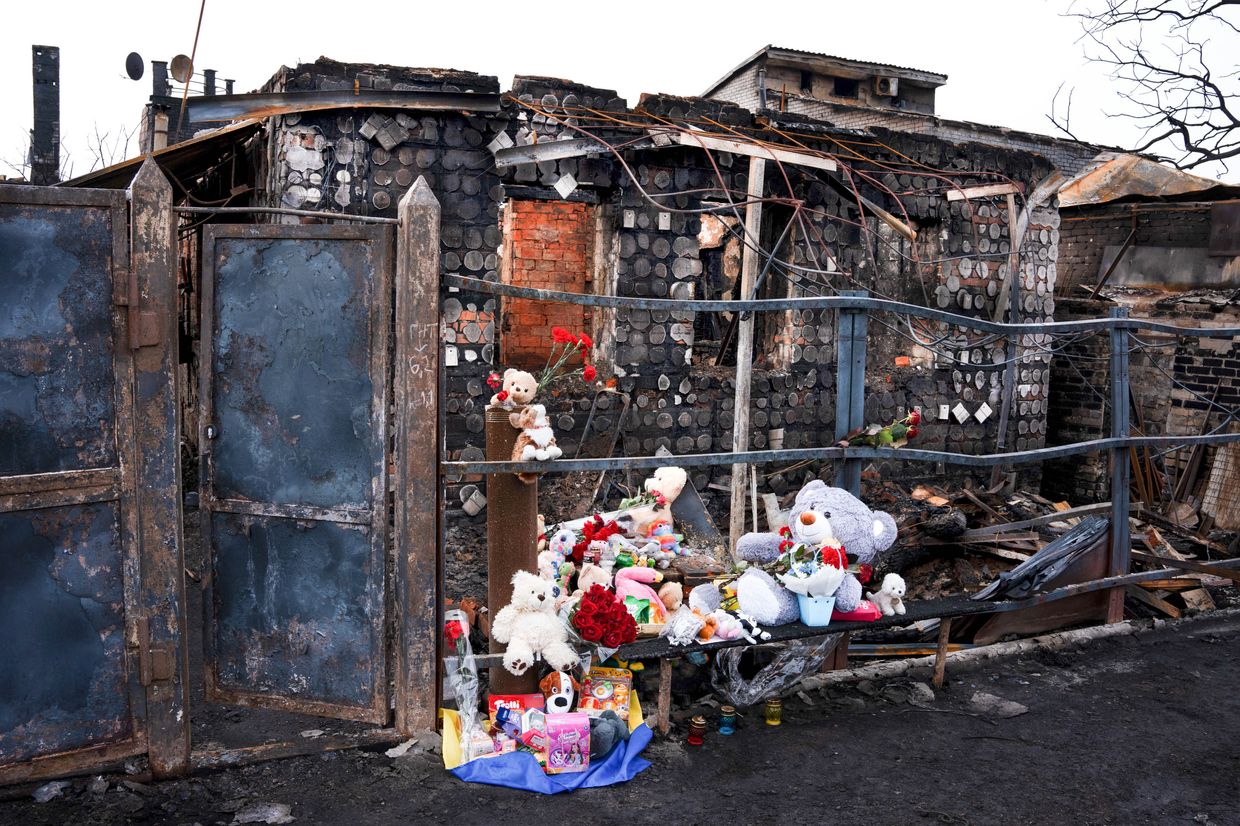Ukraine war latest: Russian drone attack on Odesa kills 12, including 5 children

Key developments on March 2-3:
- Russian drone attack on Odesa kills 12, including 5 children
- Air Force: Ukraine downs another Russian Su-34 jet
- Russian air activity over Ukraine reduced after recent significant aircraft losses, Air Force says
- UK Defense Ministry: Average number of daily Russian losses reaches new high in February
- Russian attack on Kurakhove injures 16 people, including children
Russian drones hit Odesa overnight on March 2, killing 12 people, including five children.
The strike hit a multi-story building, destroying 18 apartments and trapping people under the rubble. Eight people were injured, including a child.
Among those killed were a woman and her seven-month-old infant, as well as a four-month-old baby, a three-year-old, and a 9-year-old boy and his 8-year-old sister, according to Odesa Oblast Governor Oleh Kiper.
"It's an unspeakable and horrific tragedy for Odesa and the whole of Ukraine," Kiper wrote on Telegram.
The rescue operation in Odesa ended at around 9 p.m. on March 3.

"Every Russian loss on the front line is our country's response to Russian terror," President Volodymyr Zelensky said on March 3 in reponse to the attack.
"The world must respond to every manifestation of Russian evil and repel Russia's actions. Every act of Russian terrorism ignored by the world allows them to continue killing."
Apart from Odesa, the Russian March 2 drone attack also hit Kharkiv, Mykolaiv, Zaporizhzhia Dnipropetrovsk, and Sumy oblasts, with the Air Force reporting 14 of the 17 Russian Shahed-type drones shot down.
Following the attack, Zelensky also called on allies to transfer weapons to Ukraine faster, saying that their "political games and disputes" are limiting the country's defense.
"The world knows how to oppose terrorism. The world has enough missile defense systems to protect (Ukraine) against Shahed drones and missiles," Zelensky wrote on Telegram.
"Delaying the supply of weapons to Ukraine, missile defense systems to protect our people leads, unfortunately, to such losses, to the fact that the list of children whose lives Russia takes away constantly grows."
Another Russian Su-34 jet downed
Ukrainian forces shot down one more Russian Su-34 attack aircraft, the Air Force reported on March 2.
Prior to the report, Air Force Commander Mykola Oleshchuk announced that surface-to-air missiles had been fired at Russian Su-34 and Su-35 aircraft in the east of Ukraine.
"The East Air Command confirms the downing of a Su-34 fighter bomber. Unfortunately, it was only one," the Air Force wrote on Telegram.
It marks the latest in a recent uptick of downed Russian planes: Official reports indicate that 13 Russian warplanes were downed in February, with three Su-34 attack planes reportedly shot down on Feb. 29 alone.
The downed aircraft in February include 10 Su-34 fighter bombers, two Su-35 fighter jets, and one rare A-50 military spy plane.
Yuri Ihnat, the Air Force's spokesperson, on March 3 confirmed in a comment to Ukrainska Pravda that Russian air activity over Ukraine has reduced over the past week after the Russian military suffered significant aircraft losses.
Ihnat attributed this success to air defense systems supplied by Ukraine's allies.
"The means of resistance provided to Ukraine by Western partners demonstrate their effectiveness. This is evidenced by the number of enemy aircraft shot down in February," Ihnat told Ukrainska Pravda.
"The current task is to secure the front-line territories from the enemy's use of guided aerial bombs," he said.
Average number of daily Russian losses reaches new high in February
In its March 3 update, the U.K. Defense Ministry wrote that the average number of estimated Russian casualties in February was approximately 983 per day, marking an all-time high since the start of the full-scale invasion.
The update appears to be citing the U.K. Defense Ministry's own estimation of Russian losses.
The increase in casualties "almost certainly" reflects Russia's "commitment to mass and attritional warfare," according to the ministry.
"Although costly in terms of human life, the resulting effect has increased the pressure on Ukraine's positions across the front line."
A graph presented by the U.K. Defense Ministry of average daily losses for the Russian military indicates that casualty numbers have only risen since the start of the full-scale invasion.
The highest number of average daily losses in 2022 was 559 in November.
The number steadily rose in 2023, with the highest average daily losses of 967 in December. The Russian offensive on Avdiivka began in October 2023, which is likely the cause for increased casualty numbers at the end of 2023.
The U.K. Defense Ministry estimated that over 355,000 Russian service members have been killed or wounded since the start of the full-scale invasion. The Ukrainian government publicly estimates the number at 416,800.
Russian attack on Kurakhove injures 16 people, including children
At least 16 people have been injured after Russian forces launched a guided aerial bomb on the city center of Kurakhove, a city in Donetsk Oblast, local governor Vadim Filashkin reported on March 3.
Among those injured are two teenagers aged 17 and 15, reported Interior Minister Ihor Klymenko. Two of the injured are in serious condition.
The attack on Kurakhove occurred at around 12 p.m. local time, and at least 15 high-rise buildings were damaged by the impact, according to Filashkin.
Civilians in Donetsk Oblast settlements suffer from daily Russian strikes due to their proximity to the front line.
Heavy battles continue in the region as Russia intensifies offensive actions along the front, and Ukraine's Armed Forces face serious ammunition shortages due to delays in U.S. aid.
"While we fight (Russian) occupiers on the front line, they continue to wage war against civilians. They are waging war against children," Klymenko wrote on Telegram.
"There will inevitably be a response to these strikes. Both in international courts and on the battlefield."

















